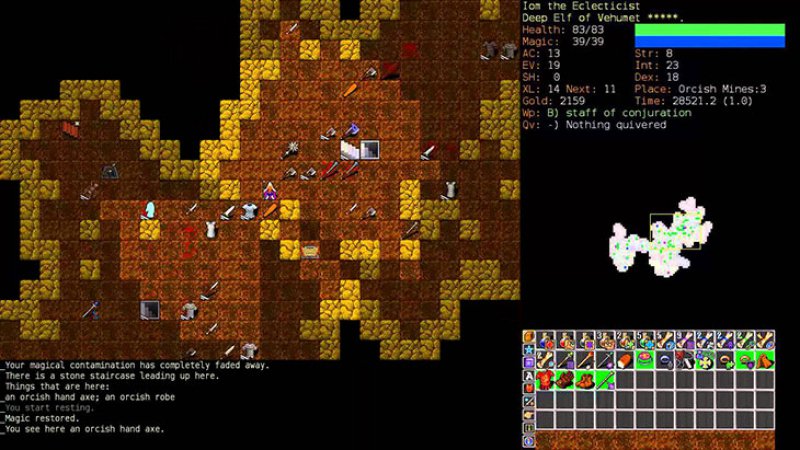
Spatial puzzles are common, and players may have to, for instance, move a stone in one part of the level in order to open a gate in another part of the level. Early games in this genre lack an automap feature, forcing players to draw their own maps in order to keep track of their progress.
CREEPYPASTA DUNGEON CRAWL STONE SOUP SERIES
Many "blobbers" are turn-based, such as the play-by-mail game Heroic Fantasy, but some games such as Dungeon Master, Legend of Grimrock and Eye of the Beholder series are played in real-time. Games of this type are also known as "blobbers", since the player moves the entire party around the playing field as a single unit, or "blob". Examples include the aforementioned Wizardry, Might and Magic and Bard's Tale series as well as the Etrian Odyssey and Elminage series. This subgenre consists of RPGs where the player leads a party of adventurers in first-person perspective, typically in a grid-based environment. On the right, the open inventory of a party member. In the center of the image, the view into the Dungeon. They also tend to be a lot smaller and more linear.įirst-person party-based dungeon crawlers Īn in-game screenshot from Legend of Grimrock a first-person grid-based dungeon crawler in the style of Dungeon Master. Instancing, the general term for the use of this technique, addresses several problems encountered by players in the shared spaces of virtual worlds, but also sacrifices the social element of shared spaces, and the feeling of realistic immersion in that virtual world. In massively multiplayer online games, an instance is a special area, typically a dungeon, that generates a new copy of the location for each group, or for certain number of players, that enters the area. In the early 2010s there was a modest resurgence in their popularity, particularly in Japan, largely due to the success of the Etrian Odyssey series by Atlus. Variations on the dungeon crawl trope can be found in other genres. Gauntlet, Diablo, The Binding of Isaac and Enter the Gungeon are examples of these dungeon crawlers. Growing out of these type of games are games considered to be of the genre "dungeon crawlers", in which the player is limited to the confines of the walls of the dungeon but allowing for complex systems around combat, enemy behavior, and loot systems, as well as the potential for multiplayer and online play. Some dungeon crawlers from this era also employed action role-playing game combat, such as Dragon Slayer, and The Tower of Druaga. Gamasutra 's Matt Barton described Telengard (1982) as a "pure dungeon crawler" for its lack of diversions, and noted its expansive dungeons as a "key selling point".


Ĭomputer games and series from the 1980s, such as The Bard's Tale, Cosmic Soldier, Dungeon Master, Gauntlet, Madō Monogatari, Megami Tensei, Might and Magic, Phantasy Star, Ultima, and Wizardry, helped set the genre's standards, while the primitive graphics were actually conducive to this style, due to the need for repetitive tiles or similar-looking graphics to create effective mazes. Although this game was quickly deleted from the system, several more like it appeared, including dnd and Moria. The first computer-based dungeon crawl was pedit5, developed in 1975 by Rusty Rutherford on the PLATO interactive education system based in Urbana, Illinois.


 0 kommentar(er)
0 kommentar(er)
